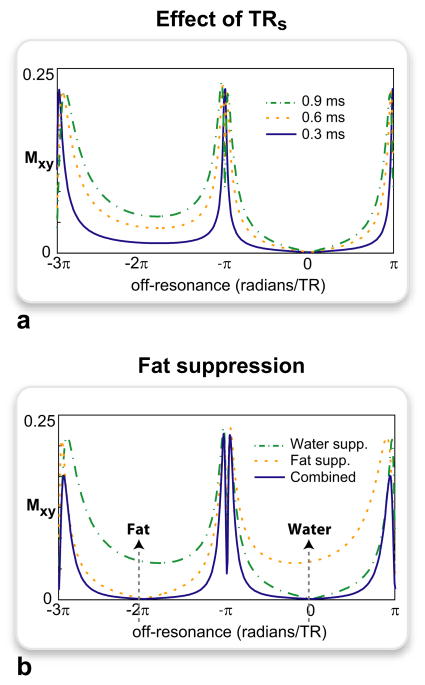Figure 2.
The low-tip-angle ATR SSFP response was simulated for the following parameters: α = 5°, T1/T2 = 5, TR = TRs + TRl, TRs = 0.9, 0.6, 0.3 ms in a and 0.9 ms in b. a: For a constant total TR, shortening TRs reduces the subpulse spacing of the ‘1 − 1̄’ binomial excitation in ATR SSFP. As a result, the effective tip angles (as described in Eq. 6) are reduced for the on-resonant stop-band and the neighboring off-resonant bands. Although this slightly reduces the width of the off-resonant peaks, the on-resonant signal suppression is improved. b: Because the adjacent bands fail to provide the near-complete suppression of the on-resonant (water) stop-band, fat suppression can be separately achieved by shifting the center of this band to the fat resonance. Both signals can then be simultaneously suppressed through a combination (multiplication) of the water- and fat-suppressed acquisitions.

